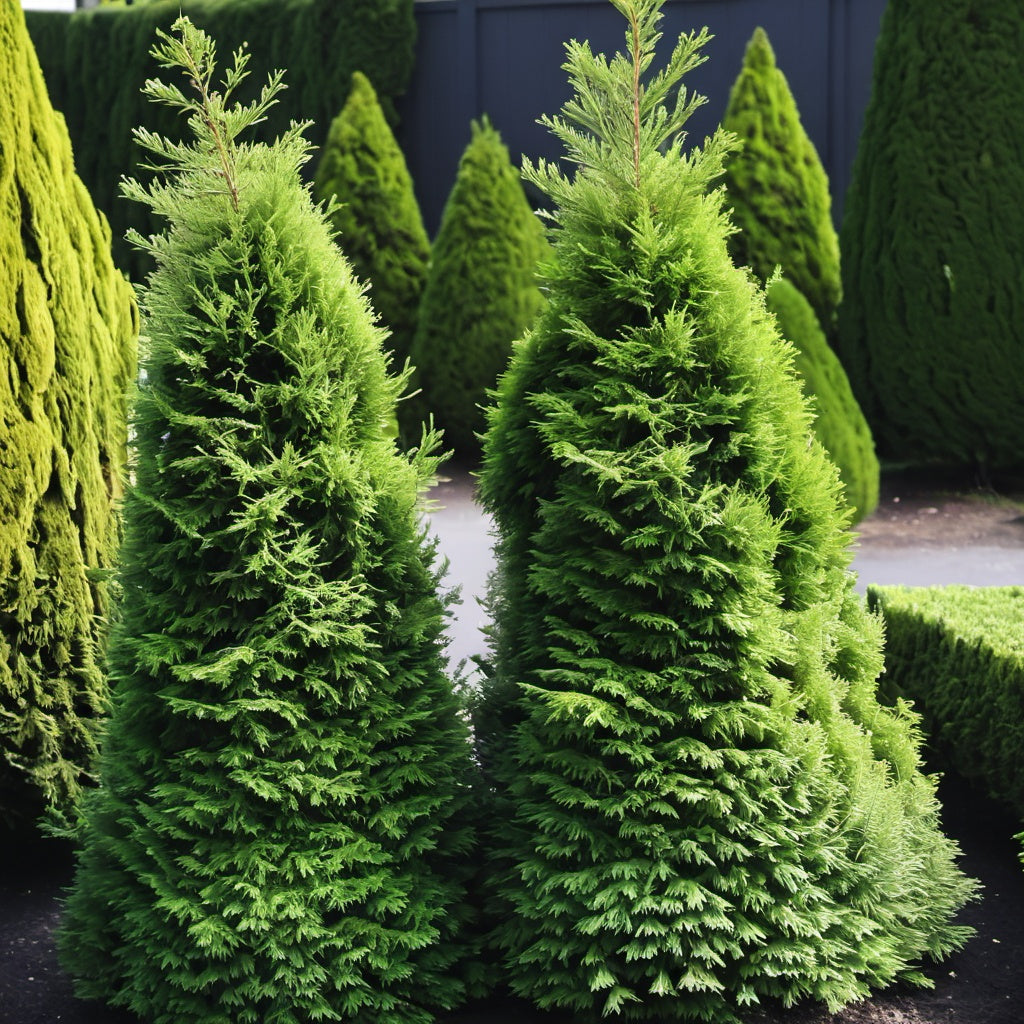American Arborvitae Tree Seeds
American Arborvitae Tree Seeds
Couldn't load pickup availability
American Arborvitae Tree Seeds
(Thuja occidentalis)
Thuja occidentalis, commonly known as Eastern Arborvitae, Northern White Cedar, or American Arborvitae, is a species of coniferous tree in the cypress family, Cupressaceae. It is native to eastern North America, primarily in regions like southeastern Canada and the northeastern United States.
Physical Characteristics:
- Height: It typically grows 40 to 60 feet (12 to 18 meters) tall but can reach up to 70 feet (21 meters) in optimal conditions.
- Spread: It has a narrow, pyramidal form with a spread of 10 to 15 feet (3 to 4.5 meters).
- Foliage: The leaves are scale-like and arranged in flat sprays. They are evergreen, ranging from bright green to a darker green color depending on the season.
- Bark: The bark is thin, reddish-brown, and peels in vertical strips.
Habitat:
- American Arborvitae is often found in wetlands, along lake shores, and in rocky outcrops, thriving in moist and slightly alkaline soils. It prefers full sun but can tolerate partial shade.
Uses:
- Landscaping: It's widely planted as an ornamental tree for hedges, windbreaks, and privacy screens due to its dense foliage.
- Wood: The wood is lightweight, durable, and resistant to decay, making it useful for fencing, poles, and shingles.
- Traditional Medicine: Native American tribes have used it in traditional medicine to treat ailments like coughs, fevers, and rheumatism.
Ecological Importance:
- The tree provides important habitat and shelter for various wildlife, including birds and small mammals. It is also a food source for deer in winter.
Growth Rate:
- American Arborvitae has a relatively slow growth rate, typically about 12 to 24 inches per year.
Overall, the American Arborvitae is valued for its versatility in landscaping, ecological contributions, and durable wood.
Zones: 3 to 7
Germination Range: 50-70%
Stratification Requirement: Seed does not require a pre-treatment but we recommend a 28 day cold moist stratification and note this is done in germination tests for this seed.
Planting Instructions:
Since American Arborvitae tree seeds have a dormancy period, cold stratification is necessary to encourage germination. To mimic natural winter conditions, place the seeds in a plastic bag with moist seed starting mix, and store them in the refrigerator at 34°F to 41°F (1°C to 5°C) for about 28 days. This process helps break seed dormancy, improving germination success.
Sowing the Seeds
After stratification, prepare a seedling tray or pots with a well-draining, nutrient-rich potting mix, ideally one that contains a combination of peat moss, sand, and perlite to promote root development. Sow the seeds just below the soil surface, lightly covering them with a thin layer of the potting mix. Water the soil gently but thoroughly, ensuring it remains consistently moist throughout the germination period. Place the tray or pots in a bright, indirect light location at a temperature of 65°F to 75°F (18°C to 24°C).
Germination and Early Care
Germination of American Arborvitae tree seeds can take up to 2 weeks, so patience is crucial. Once the seedlings begin to emerge, maintain consistent moisture levels, but avoid overwatering to prevent root rot. As the seedlings grow, gradually expose them to more sunlight and air circulation to strengthen their stems and leaves. When the seedlings are large enough to handle, they can be transplanted into individual pots to allow for further development.
Transplanting Outdoors
Once the seedlings have grown to a height of about 6 to 12 inches and have developed a strong root system, they are ready to be transplanted into their permanent outdoor location. Choose a site with well-drained soil and full sun to partial shade. Dig holes that are deep enough to accommodate the root balls, and space the trees about 10 to 15 feet apart to allow room for their mature size. After planting, water the young trees well and mulch around their base to help retain soil moisture and protect the roots.
With proper care, including regular watering during dry periods and protection from harsh weather, American Arborvitae trees will thrive and become an excellent addition to landscapes as windbreaks, hedges, or ornamental features.
Share


